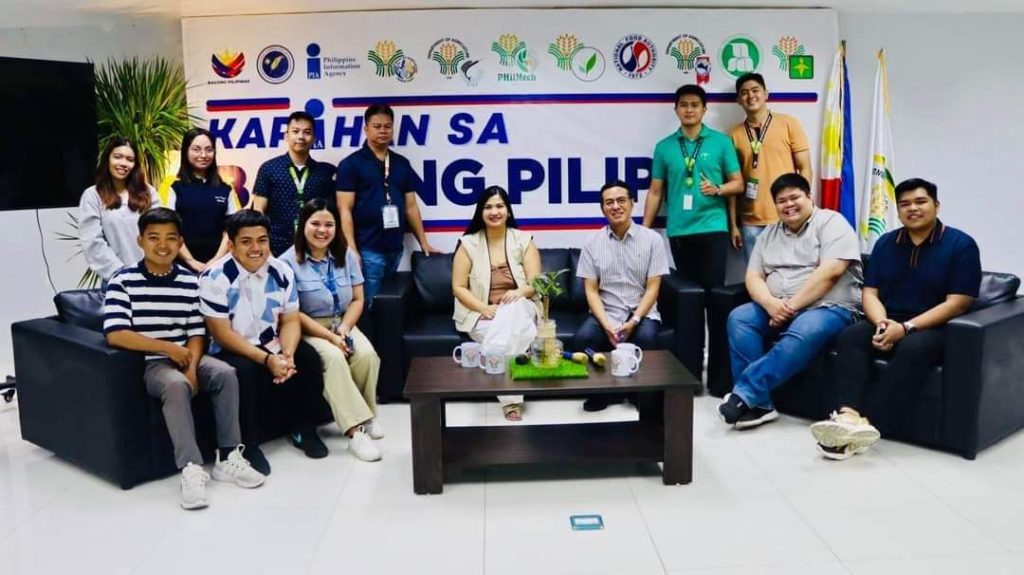The Department of Agriculture’s Regional Field Office III (RFO III) is committed to promoting agricultural development in Central Luzon through effective policy frameworks, public investments, and comprehensive support services tailored for both domestic and export markets.
This commitment was emphasized on June 18 during the PIA Kapihan sa Bagong Pilipinas, hosted by PIA Regional Director William Beltran, with DA OIC Regional Director Dr. Eduardo Lapuz, Jr., Bureau of Fisheries and Aquatic Resources Regional Director Wilfredo Cruz, and Philippine Center for Postharvest Development & Mechanization Director Dr. Dionisio Alvindia as resource persons. It was also attended by the agency’s directors and divisions chief. They showcased the programs and projects that have bolstered the domestic food supply for consumers while ensuring the welfare of local food producers.

Congratulations and a special mention to RAFIS Chief Ozanne Ono Ocampo, PIA Gitnang Luzon’s hardworking Assistant Regional Head Carlo Lorenzo Datu, and Information Officer I Jag Lyra Costamero for organizing a well-executed media forum. Your efforts are deeply appreciated.
With a vision to create a modernized and globally competitive agricultural sector, RFO III aims to ensure food security, resilience, and sustainability. Under the leadership of Lapuz, the office strives to empower farmers, fishers, and stakeholders with accurate and responsive interventions, embodying the slogan “DA sa Gitnang Luzon, Katuwang sa Pag-Ahon!”
Central Luzon encompasses a total land area of 2,201,463 hectares, with 552,104 hectares designated for agriculture. This includes extensive areas for rice, corn, root crops, vegetables, and plantation crops such as coconut, sugarcane, and mango. As of 2020, the region’s population was 12,422,172, distributed across 7 provinces, 15 cities, 24 congressional districts, 116 municipalities, and 3,102 barangays. The region also hosts 12 special economic zones.
In 2023, Central Luzon produced significant agricultural outputs, with rice production reaching 3,638,431 metric tons, contributing 18% to the national output and achieving a 154% sufficiency level. Other key commodities included corn, onion, vegetables, pork, goat, chicken meat, chicken eggs, duck meat, and duck eggs, each with varying contributions to national production and sufficiency levels. Despite some fluctuations, the region saw a 37% increase in hog production and steady gains in other livestock sectors.
RFO III’s technical support in 2023 involved distributing seeds, fertilizers, and planting materials, alongside major investments in agricultural machinery, equipment, and infrastructure such as farm-to-market roads and irrigation systems. The Philippine Rural Development Project also received substantial funding, focusing on infrastructure and enterprise development to enhance agricultural modernization and value chain improvement.
Meanwhile, the Bureau of Fisheries and Aquatic Resources (BFAR) has a mission to protect fisheries and aquatic resources while empowering stakeholders to boost productivity. BFAR envisions leading sustainable fisheries management, aiming for a 20% fish surplus and improved quality of life for fisherfolk by 2030.
Central Luzon’s fisheries resources are extensive, with five coastal provinces and numerous municipalities engaging in fishing. The region supports 154,250 registered fisherfolk, significant coastlines, and various marine and inland resources. From 2019 to 2023, commercial fisheries, municipal fisheries, and aquaculture contributed significantly to the region’s total production, with aquaculture leading at 84.55%.
BFAR’s development programs encompass aquaculture technology outreach, sustainable fishing practices, and post-harvest marketing efforts. Regulatory and law enforcement initiatives include patrols, facility inspections, and resource management projects. Additionally, BFAR provides extensive fisheries training, technical assistance, and educational support to bolster local capabilities.
Initiatives like the Greenwater Technology for sustainable shrimp culture and the World Bank-funded FishCoRe Project further underscore BFAR’s commitment to enhancing fisheries governance through science-based, participatory, and transparent approaches.
Both RFO III and BFAR are pivotal in driving agricultural and fisheries development in Central Luzon, ensuring fair value for producers, affordable prices for consumers, and reasonable profits for traders, as highlighted by Secretary Francisco Tiu Laurel Jr. Their concerted efforts aim to modernize Philippine agriculture and fisheries, fostering sustainable and resilient sectors that benefit all stakeholders.